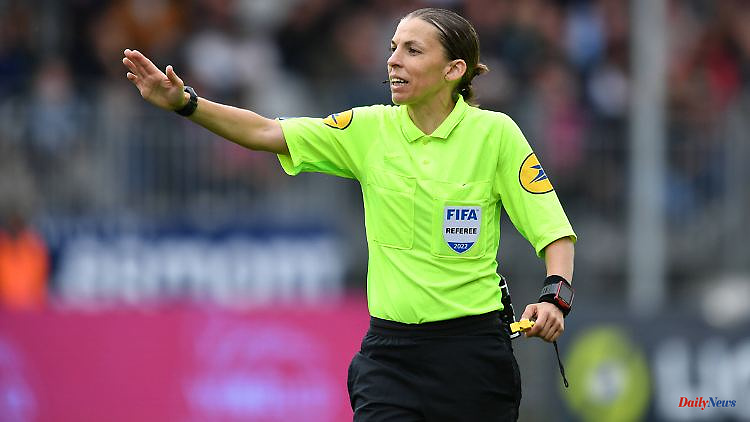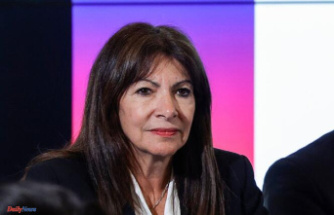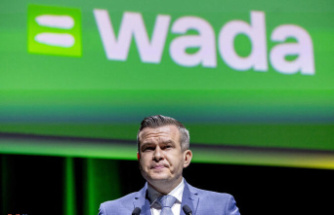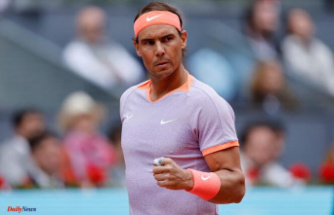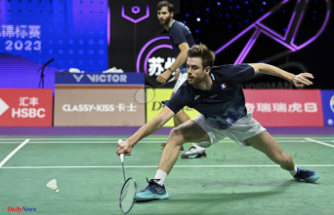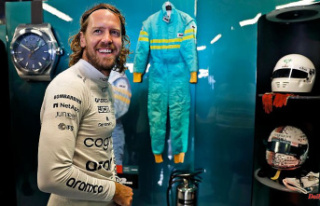An Italian is whistling the opening game, female referees are being used for the first time at a men's World Cup, every game is supervised by ten match officials, and the color black dominates the jerseys: everything you need to know about the referees at this World Cup.
The chief referee of the world football association FIFA, Pierluigi Collina, obviously followed the motto when choosing the referee for the opening match of the football World Cup between hosts Qatar and Ecuador: no experiments! He nominated his compatriot Daniele Orsato and thus one of the most experienced referees of the tournament. The Italian will be 47 in a few days. It may be his first World Cup as main referee, but four years ago in Russia he still acted as a video assistant, including in the opening game of the tournament. But Orsato was also used as a referee at the European Championship last year and also refereed the final in the Champions League between FC Bayern Munich and Paris Saint-Germain a year earlier.
The man from the northern Italian city of Vicenza, who has been a FIFA referee for 12 years, is a quiet and widely accepted representative of his guild with a keen sense of the necessities of the game. In terms of running, he is no longer one of the strongest game masters, but he always makes up for that with routine and teamwork. Orsato seeks understanding with the players, but does not shy away from consequences when they are unavoidable. Like in the round of 16 of the 2021 European Championships, when he sent off the Swedish player Marcus Danielson after a foul that posed a health risk in the match between Sweden and Ukraine. He is the first European since 1998 to referee the opening game of a World Cup.
Daniele Orsato is one of 36 officials nominated for this World Cup. There are also 69 referees to support the sidelines and 24 video assistants. For the first time in the history of the World Championships, female referees are also nominated: Stéphanie Frappart from France, Yoshimi Yamashita from Japan and Salima Mukansanga from Rwanda will serve as referees and fourth officials, Karen Díaz Medina from Mexico, Kathryn Nesbitt from the USA and Neuza Back from Brazil act as assistants. With the exception of Oceania, all continental associations will each send at least one female match official to Qatar. "This is proof that quality and not gender counts," said referee boss Collina.
Perhaps the most exciting person is the Rwandan woman Mukansanga. The 34-year-old became the first woman to referee a match at the men's Africa Cup of Nations, when Zimbabwe met Guinea in the group stage in January this year. She has been a referee in the highest league for men in Rwanda since 2018. For women, she was in action at the 2019 World Cup in France and the 2020 Olympic Games in Tokyo.
Salima Mukansanga studied nursing and midwifery. As a referee in men's games, she initially had to face considerable resistance, as she reported to the German football historian Petra Tabarelli in an interview: "When I worked as a referee in the lower-class Rwandan leagues, It was something new because there were no female referees back then. It was purely a male domain. People didn't accept what I did." But she persevered in order to one day realize her big dream of becoming a professional referee. The nomination for the tournament in Qatar came as a surprise to her, "my next goal was more likely to be the Women's World Cup in New Zealand next year". But FIFA has recognized "that women can be high-quality referees and work their way up to the top of men's football".
Meanwhile, the DFB referee is represented in Qatar by Daniel Siebert, assisted by Jan Seidel and Rafael Foltyn. Bastian Dankert and Marco Fritz are there as video assistants. It is the first world championship for 38-year-old Siebert. After Felix Brych's departure, he is the new German number one at international level. His nomination therefore came as no surprise, unlike last year when UEFA called him up alongside Brych for the summer's European Championship. At the time, Siebert wasn't in the highest category of UEFA referees, which is why he didn't expect to be at the European Championships himself. "I didn't feel like a candidate at the time," he said recently in retrospect.
The following applies to the games: The referee may not come from any country whose team belongs to the group in question. A total of ten referees are on duty in every game: In addition to the referee, two assistant referees and the fourth official, there is also a backup assistant in the stadium who steps in if one of the helpers on the sidelines is injured or otherwise unwell. The VAR, who follows the games in Doha, will be supported by three assistants, each with a different focus. There is also a substitute there, the "stand-by assistant".
Because the World Cup takes place in winter and is therefore in the middle of the season, there are no rule changes. As a technical innovation, semi-automatic offside technology will be used for the first time at a World Cup and is intended to significantly speed up the offside check after a goal. At the press conference in Doha on Friday, Pierluigi Collina also stated that the referees had been instructed to consistently punish excessively hard use of the elbow and unhealthy kicks with a raised and stretched leg with a red card. In addition, the referees should make up for lost playing time.
A curiosity on the side: It is already certain that the color black will experience a renaissance in referee jerseys. Unlike in previous tournaments, when colored jerseys dominated, the referees will wear the black jersey this time, at least in the group phase, by far the most. In the 48 games it will be used 22 times, the red jersey ten times, the yellow jersey eight times, the blue jersey six times and the purple jersey twice. FIFA, which leaves little to chance, has already determined this, as well as the team's choice of jerseys for the games in question.

